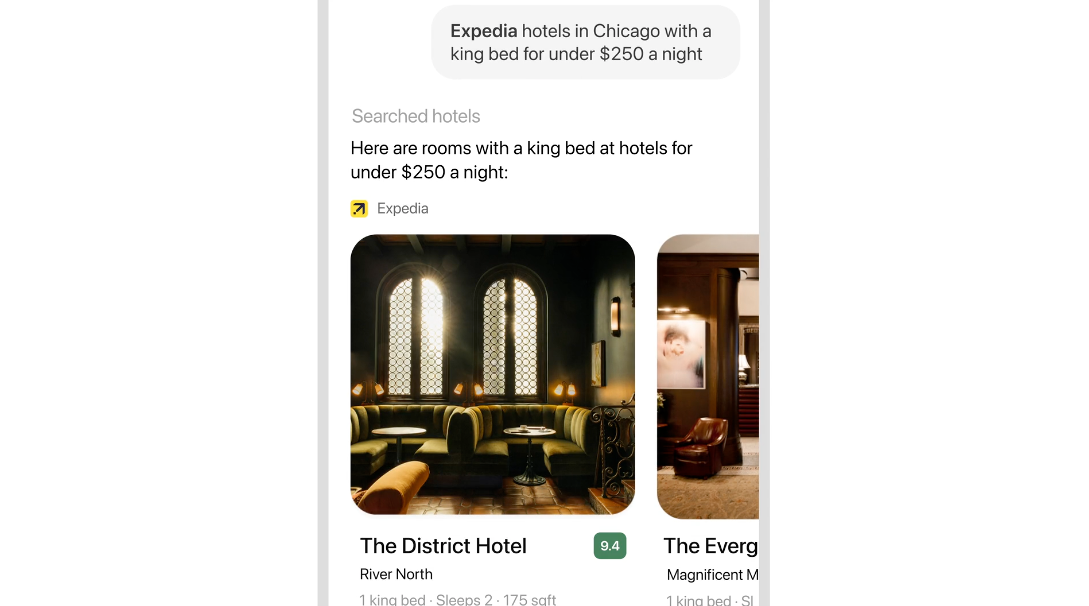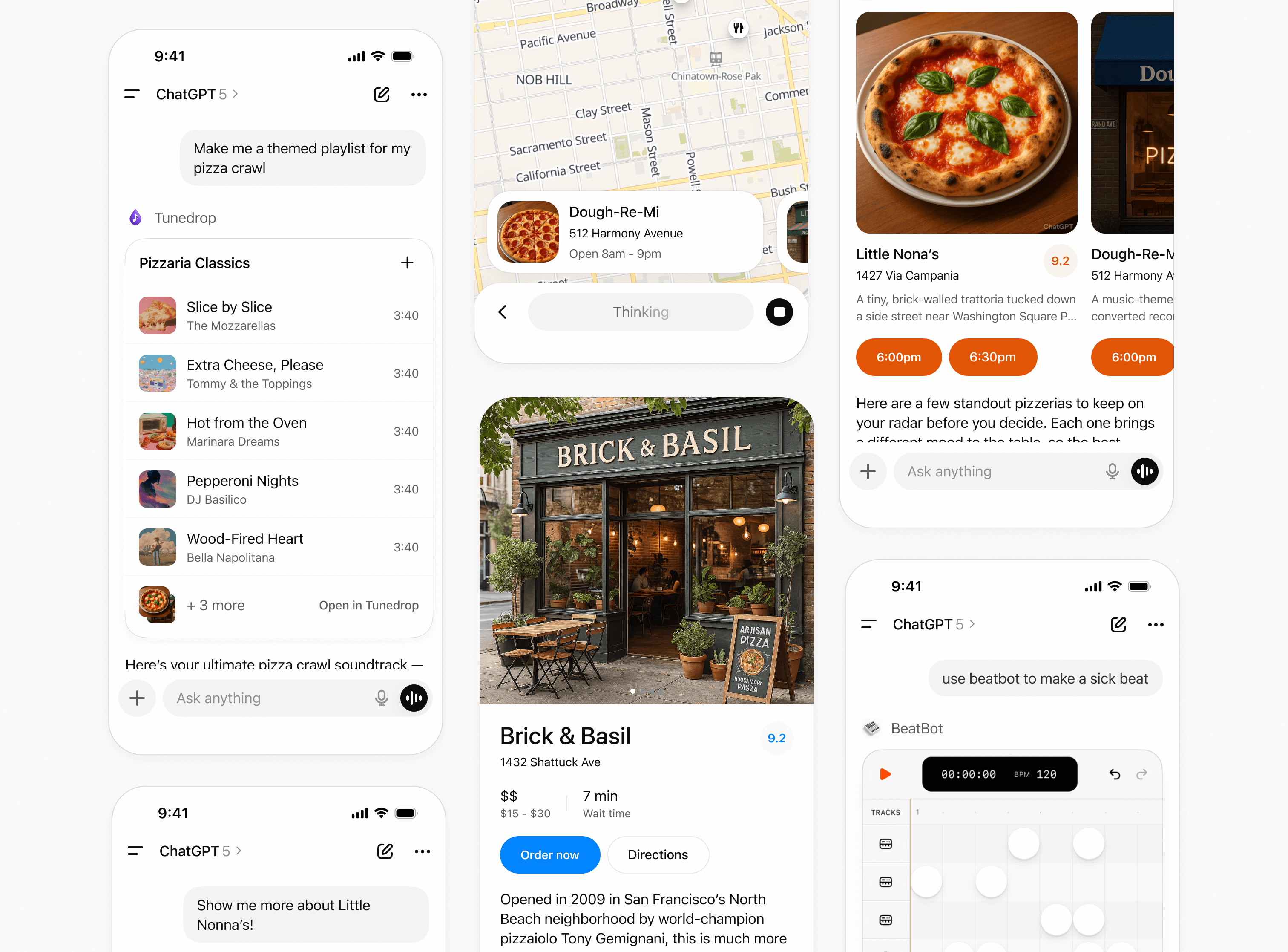What OpenAI’s ChatGPT Apps SDK means for developers and brands
OpenAI announced its new ChatGPT Apps SDK at Dev Day yesterday. If you have an app or service that fits naturally into an AI assistant, this is worth your attention.
It’s OpenAI’s third attempt to make ChatGPT not just a wildly successful consumer app, but a full-fledged platform for third-party developers.
The first two were Custom GPTs, which haven’t caught fire with consumers. This new SDK, however, feels different. It’s more powerful, more flexible, and closer to something developers can actually build a business on.

What is the ChatGPT Apps SDK and how does it extend MCP?
Technically, the Apps SDK builds on ChatGPT’s Model Context Protocol (MCP).
With this update, developers can now return interactive UI components like widgets and forms that render directly inside ChatGPT. That means your app isn’t just providing data, it’s creating an experience within the chat itself.
If you’ve already built with MCP, you’ll feel right at home. The same security and interaction model applies (for better and worse). And it wouldn’t be surprising to see other platforms adopt this approach in the months ahead.
How will ChatGPT apps be distributed and reviewed?
If feels obvious that OpenAI is moving toward an App Store-like model.
If you want your app available to ChatGPT users, you’ll need to submit it for review and comply with a set of detailed guidelines and policies — the ChatGPT equivalent of Apple’s App Store Review process, if you will.

This means curation is part of the plan. Apps that meet the baseline policies will appear in the interface, but apps seeking higher visibility will need to qualify for “enhanced distribution opportunities.”
Translation: early recommendation slots will likely go to major, trusted brands (like Zillow, which was demoed on stage), while smaller developers will face a higher bar or a partner-driven path to distribution.
How will ChatGPT recommend third-party apps to users?
OpenAI outlined a few signals for app recommendations inside ChatGPT:
- Conversational context: when a user’s chat suggests a relevant use case.
- Brand mentions: when a user directly references your company or product.
- Web citations: when ChatGPT surfaces your content from its web search.
That last one is especially interesting as it creates an “upgrade path.”
If your brand is already being cited in ChatGPT search results, and you have an approved app, ChatGPT may prompt users to “open the full app experience.”
Think of a user asking about home listings, seeing Zillow cited in a response, and being invited to launch the Zillow app right inside ChatGPT.
What types of apps does OpenAI want developers to build?
The SDK docs make OpenAI’s intent clear: build real apps, not wrappers.
They’re looking for interactive, action-driven experiences (e.g., tools that generate content, help users accomplish something, or extend a workflow).
A few practical takeaways:
- Apps behind paywalls (like Spotify) will likely pass review.
- You’ll see some user interaction data via your own APIs but won’t access the user’s broader ChatGPT conversations.
- Privacy and security restrictions are strict (and for good reason).
In short, if your app doesn’t do something dynamic inside the chat, it’s probably better served by the existing search and retrieval system.
Why does OpenAI require such a strict review process?
The App Store-style review isn’t just about control. It’s about safety.
Combining a large language model, third-party code, and user data creates what some call the “lethal trifecta” -- a recipe for data leaks or manipulation if not handled carefully.
Until there’s a bulletproof technical safeguard, OpenAI is leaning on policy and human review to keep things stable. It may feel restrictive now, but it’s likely necessary to prevent the kinds of security incidents that could derail broader consumer trust.
When can developers start building with the Apps SDK?
The SDK tools and docs are already live, though public app submissions aren’t open yet.
Still, this is the time to experiment. Build prototypes. Test interactions. Get familiar with the policy docs. In the AI world, hands-on experience compounds fast. And there’s no substitute for actually trying it.
I’ll be exploring it myself and sharing what I learn.